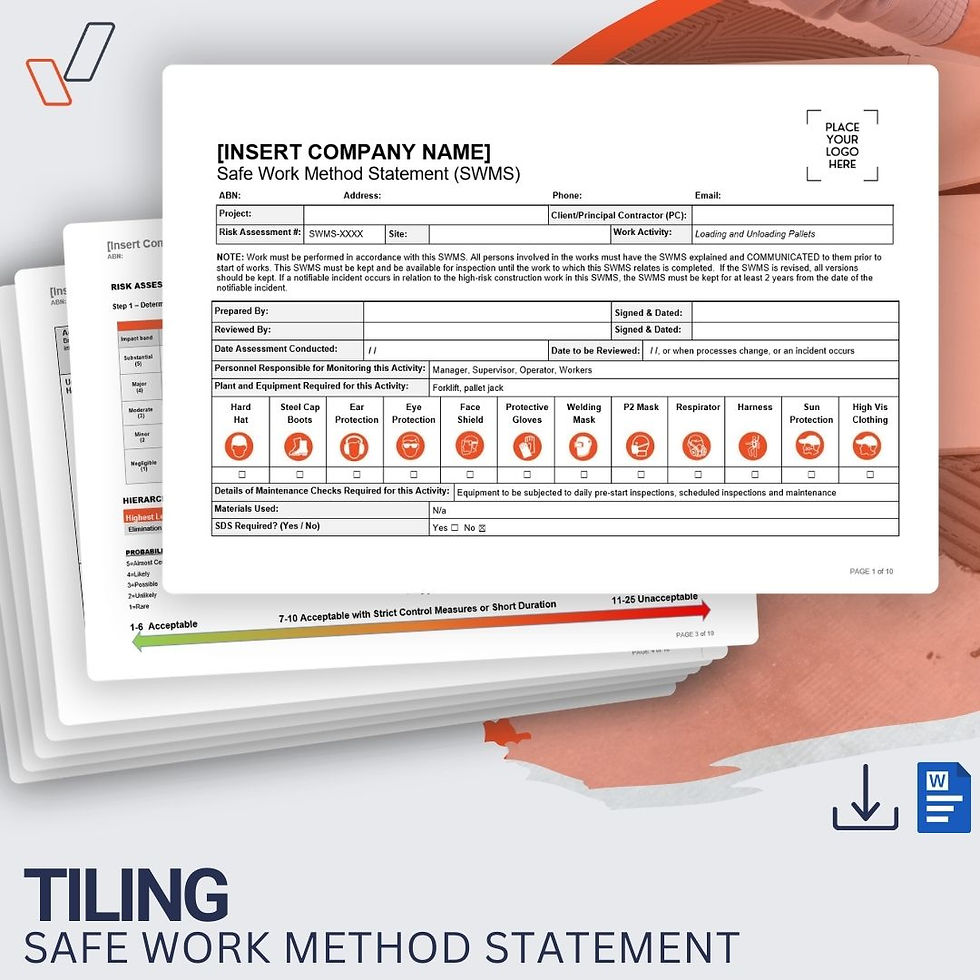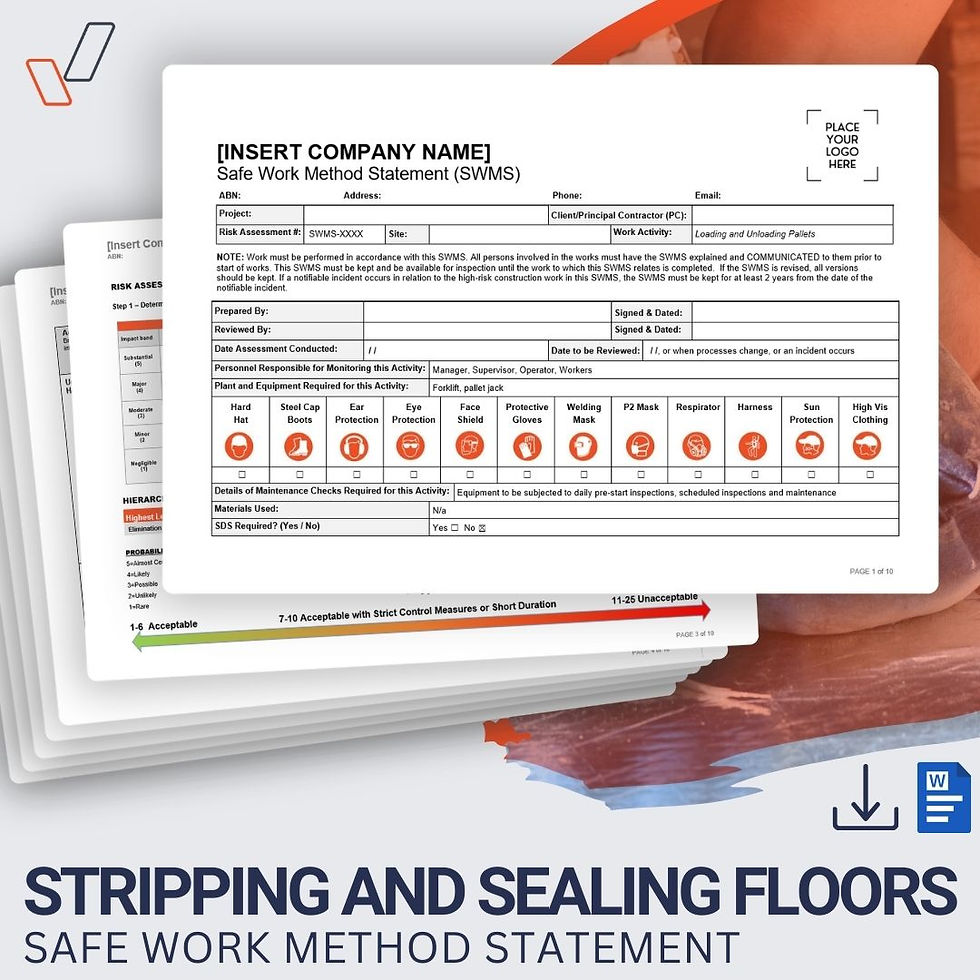This 13-page Elevated Work Platforms (Scissor Lift) Safe Work Method Statement (SWMS) provides the typical safety controls and possible hazards associated with operating and working from scissor lifts. It’s designed to help businesses and workers understand the risks involved and outline the step-by-step procedures to ensure safety and compliance.
Pre-filled, ready to use, and created by WHS experts, this SWMS helps your business meet its WHS obligations and maintain compliance. Suitable for all Australian states and territories, it comes in a fully editable Microsoft Word format so you can easily customise it with your company name, logo, and site-specific details.
Who This SWMS Is For
This SWMS is ideal for businesses and trades that use elevated work platforms, including:
Construction companies
Electrical and data contractors
Maintenance and cleaning providers
Warehousing and logistics operations
HVAC and refrigeration technicians
Manufacturing and industrial businesses
Any workplace where scissor lifts are used
What This SWMS Covers
This SWMS outlines key hazards, associated risks, and the control measures required to safely operate and work from an Elevated Work Platform (Scissor Lift):
Risk of falls from heights (>2 metres): Use of approved fall arrest harnesses, guardrails, secure access points, and exclusion zones to prevent falls.
Hit by falling objects: Mandatory use of hard hats, securing tools, equipment, and materials, and installing barricades or signage to restrict access below work areas.
Electrocution from overhead powerlines: Maintaining safe clearance distances, using spotters where required, and ensuring non-conductive materials are used when working near electrical hazards.
Crushing or impact injuries from plant/equipment: Safe operation of scissor lifts, pre-start inspections, ensuring rated load limits are not exceeded, and keeping body parts inside the platform at all times.
Slips, trips, and falls: Monitoring and clearing access areas, keeping platforms free of obstructions, and halting work in wet or slippery conditions.
Mechanical failures or equipment faults: Daily pre-start inspections, routine maintenance in line with manufacturer guidelines, and immediate removal from service of defective equipment.
Weather-related instability: Monitoring weather conditions, ceasing operations during high winds, rain, storms, or reduced visibility, and securing equipment when not in use.
Unauthorised access or use of the EWP: Lockout/tag-out procedures, restricted access to controls, and ensuring only qualified personnel operate the equipment.
Emergency readiness and response: Establishing clear rescue plans, ensuring emergency descent procedures are understood, and training workers in incident response protocols.
What’s Included in Your Template
HRCW selection table
Risk assessment guidelines and risk rating calculator
Step-by-step procedures and safety controls
Possible hazards and control measures
PPE requirements
Plant and equipment list
Relevant legislation, regulations, codes, and standards
Worker sign-off page
This SWMS template for Elevated Work Platforms (Scissor Lift) is an invaluable tool for quickly and effectively documenting your WHS systems. Designed for swift editing and customisation, it adapts easily to your operational needs - making it an essential part of your safety management toolkit.
Get your Elevated Work Platforms (Scissor Lift) SWMS today and start using it instantly! Save time, stay safe, and help your business stay compliant with our expert-developed templates.
Elevated Work Platforms (Scissor Lift) SWMS
We accept the following payment methods:
➡️ Pre-filled and ready to use
➡️ Created by WHS experts, aligned with Australian WHS legislation
➡️ Suitable for all Australian states and territories
➡️ Fully editable Microsoft Word format
➡️ Instant delivery via email
➡️ Free list of relevant legislation & codes of practice (valued at $19.95)
➡️ Easy customisation instructions included
➡️ Pay once, use it as many times as you need
➡️ 12 months free phone and email support


















